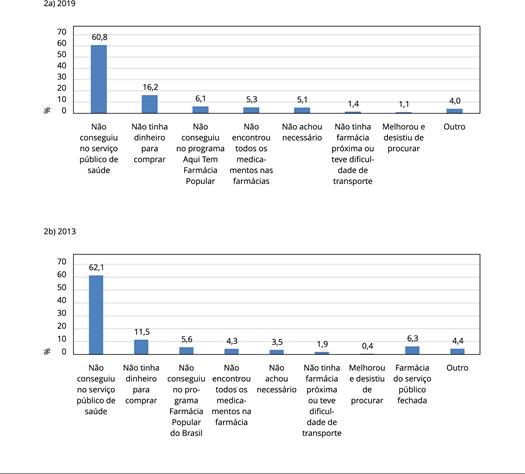The study aimed to analyze and compare the prevalence of access to medicines and associated factors among users of the Brazilian Unified National Health System (SUS). The authors analyzed data from the 2013 and 2019 editions of the Brazilian National Health Survey, a nationwide health study, representative of the Brazilian population. The outcomes were: (1) obtaining from the SUS all the medicines prescribed during care received in the SUS itself in the two weeks prior to the interview (2) and obtaining all the medicines, regardless of the source. Demographic and socioeconomic characteristics were included as independent variables. In 2019, 29.7% of the interviewees obtained all the prescribed medicines from the SUS, 81.8% obtained all the medicines in general (considering all sources), and 56.4% paid some amount for the medicines. The proportion who did obtain any medicine from the SUS and that made some out-of-pocket payment increased from 2013 to 2019. The likelihood of obtaining all the medicines in the SUS was higher among the poorest, and that of obtaining the medicines regardless of source was higher among the wealthiest. Approximately two out of three persons that were unable to access all the medicines reported difficulties obtaining them in services funded by the public sector. There was an increase in out-of-pocket expenditure on medicines in Brazil and a reduction in access through the SUS, among users of the system.
Keywords:
Pharmaceutical Preparations; Health Services Accessibility; Unified Health System

 Thumbnail
Thumbnail
 Thumbnail
Thumbnail

